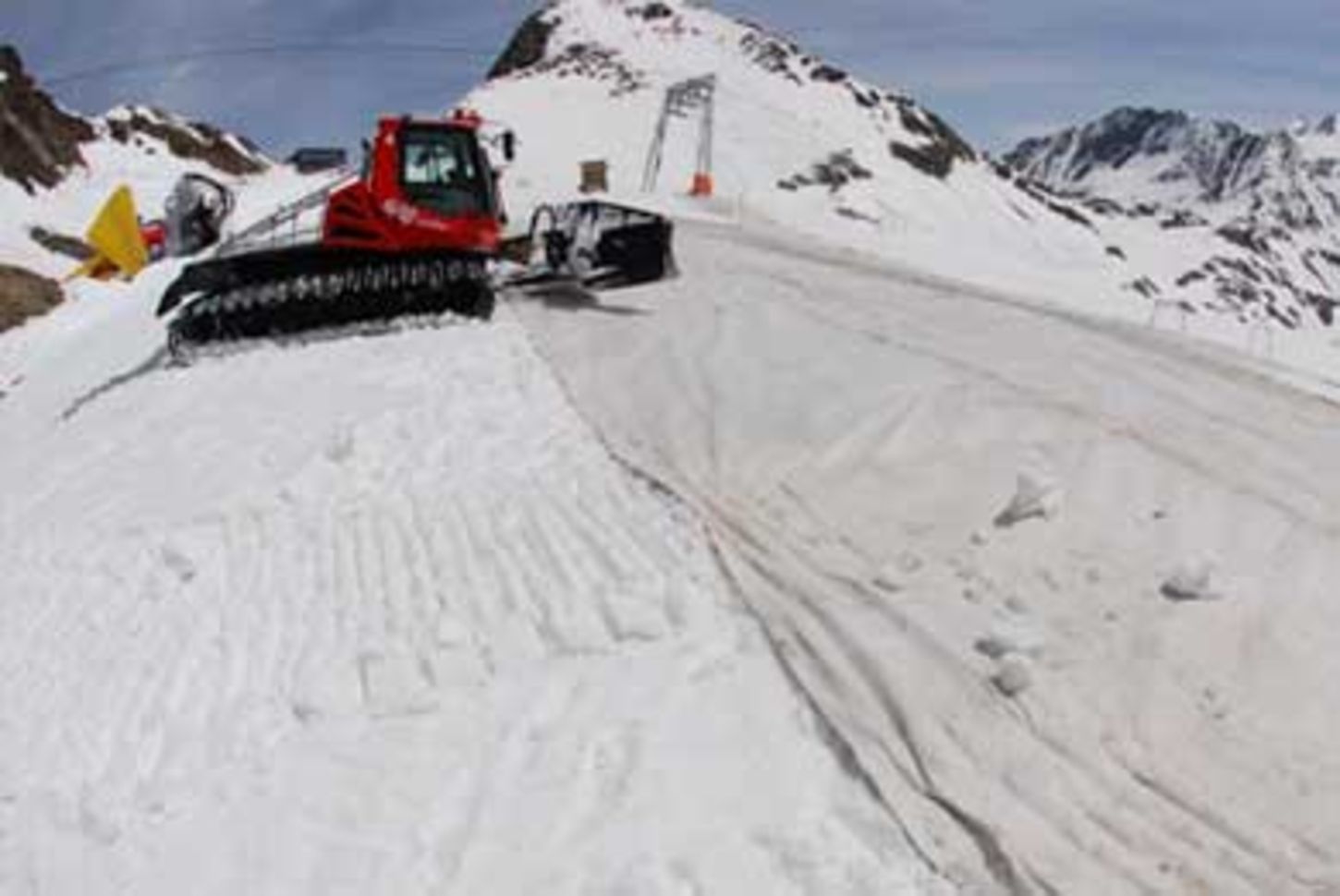For decades the glaciers have been in retreat and their role of a reflective global cooling shield, year-round water supply and natural eco-system has long been discussed. Glaciers form a vital role in so many aspects of mountain life and without them the existence of living and working in these regions would be significantly more challenging.
For the winter sports industry the glacier skiing areas have a considerable and growing advantage over non-glacial ski areas – they offer snow security for an ever-extending winter sports season. It is common for many of the glacier skiing areas to operate for 9 or months per year and even for the peak winter months, they still retain the advantage of 100% snow security (although winds can be disruptive at these altitudes). Huge investments have been made in the infrastructure on the glacier skiing of Austria including new lifts, dining and service facilities high up on the margins of the ice. And whilst most of the glaciers retain an enviable depth of ice, these qualities are under great threat from climate change.
Aware of current and forecast conditions the glacier ski areas are active in preventing the decline of their ‘cash cow’. In many ways these areas are getting far more attention that other glacial areas that are forecast to lose ice but aren’t directly exploited as a leisure resource – these areas would include parts of the remote Alps but also many other distant regions across the globe. Scientific monitoring of the glacier skiing areas is extensive whilst methods to counteract natural threats range widely. Below are a few of the measures currently in operation in the Austrian Alps.
Thermal / reflective mats on the Stubai Glacier
These are mats that are laid on and pinned to the surface of the glacier in critical areas of the glacier. They are designed to thermally retain the cold heat of the ice and reflect solar rays. Due to the vast areas of the glaciers they are strategically located where ice loss is most critical and very often around the anchor points of chair lifts and gondolas which intersect the glacier. Blankets are removed in the autumn and the natural cycle of snow accumulation over the winter months is allowed to proceed.
The impact of their deployment is clear when covered and exposed ice border each other – in September 2013 the elevation difference between covered and exposed ice at the critically important at the downhill periphery of the glacier was ca. 2.5m. Whether these methods can be deployed on a suitable scale to counteract rising temperatures is a key and unresolved consideration.
Replenishment snow making
An alternative or additional way of altering the accumulation and loss cycle of the glacier is to add manufactured snow to the glacier during the winter months. Snow making has been criticised in recent years for its energy and water resource use. It must be said however that storing water in the mountains in the form of glacial ice adds to the natural water cycle in any case. Energy use in pumping the water to glacier areas is a genuine concern and one that Solden have addressed by building an enormous 405,000 cubic metre reservoir at 2900m altitude. The plan is to supply the Rettenbach and Tiefenbach glaciers as well as the lower Solden ski area with artificially created snow to compensate for the natural (yet accelerating) summer ablation (melting). By locating the input water above (and in some cases below) the snow cannons reduces greatly the energy required to produce the snow.
Ice manufacture
A variation on the theme used in Solden is the manufacture of ice on the Pitztal Glacier. Here they employ a ‘Snowmaker’ system that can generate ice at above zero temperatures without chemical supplements. The system uses a vacuum technology that had previous applications but has been utilised to generate large quantities of ice with low energy inputs. The ice is manufactured in an upright cylinder and pours down a chute into a pile which is then deployed by Pisten Bullies.
Whether these and other attempts to preserve the glacier skiing areas of the Alps depends greatly on the course of future climate change and the resource commitment of those tasked with preserving their leisure products. One thing is sure though, this issue is being taken seriously by the industry and many attempts are being employed to ensure that these huge ice sheets don’t fall victim to humankind’s inability to develop clean energy.
